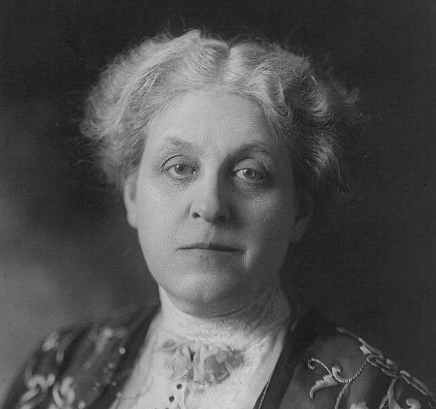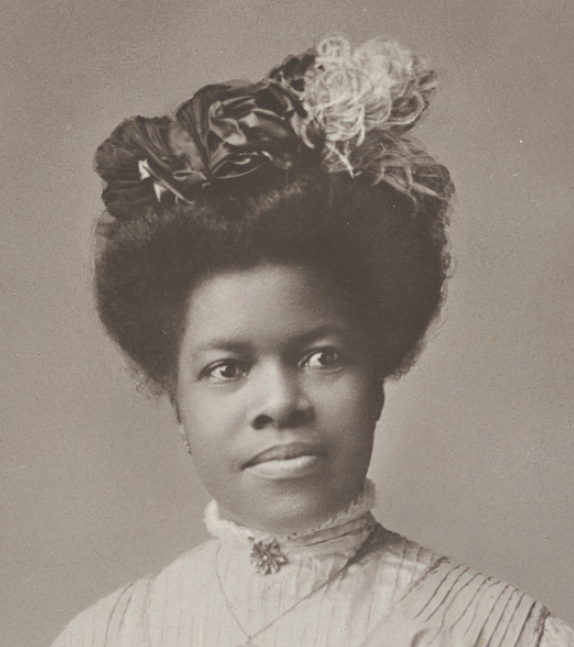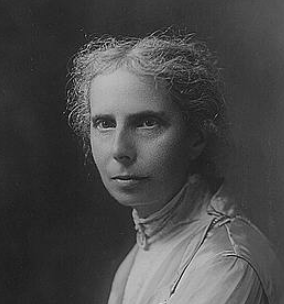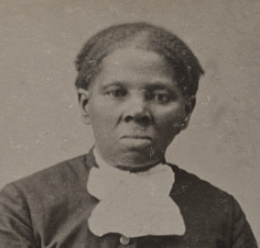by
 Ann Canning
Ann Canning
This is the week that all participants will have an opportunity in class to have a Zoom conversation in a break-out room with an assigned classmate. During that 20-minute time slot, you will be sharing ideas for adding to each other's Network Album and asking questions about how the album's primary sources can be used in a community of learners.
You have found many unique primary sources during this Leadership course, and your comments on our Canvas Discussion Board indicate that you searched both loc.gov and tpsteachersnetwork.org successfully. This week, we ask you to review your album description and the teacher notes section that is included in every primary source. If you have not already filled in some of these sections, add some specific inquiry questions and match your primary sources with one of the TPS inquiry strategies that you have experienced in class or earlier.
As you review the album created by your assigned peer review partner, we encourage you to share these observations about their album:
- One gem or outstanding primary source included in this album.
- One question you have about the album.
- One opportunity for adding to this album.
Thank you for this close read of primary sources and deep dive into the archives at loc.gov and this Network.
--Ann Canning
This is the week that all participants will have an opportunity in class to have a Zoom conversation in a break-out room with an assigned classmate. During that 20-minute time slot, you will be sharing ideas for adding to each other's Network Album and asking questions about how the album's primary sources can be used in a community of learners.
You have found many unique primary sources during this Leadership course, and your comments on our Canvas Discussion Board indicate that you searched both loc.gov and tpsteachersnetwork.org successfully. This week, we ask you to review your album description and the teacher notes section that is included in every primary source. If you have not already filled in some of these sections, add some specific inquiry questions and match your primary sources with one of the TPS inquiry strategies that you have experienced in class or earlier.
As you review the album created by your assigned peer review partner, we encourage you to share these observations about their album:
- One gem or outstanding primary source included in this album.
- One question you have about the album.
- One opportunity for adding to this album.
Thank you for this close read of primary sources and deep dive into the archives at loc.gov and this Network.
--Ann Canning
Our fall Institute has reached the halfway mark and the Canvas discussion board is filled with an exchange of ideas for teaching with primary sources. Here in the Network, your new albums are providing some unique primary sources both inside and outside loc.gov. This week you have the option to add more sources and take some time to describe how you will connect the learners in your school or organization with these sources. That can be done in the Album description or in the Teaching Notes for one or more sources. It's not too late to add tags or comment on your classmates' albums in support of their inquiry ideas.
And if you have questions about finding a particular primary source or how it could be used in a classroom, add your question here. There are Network Mentors and TPS ER Facilitators waiting to jump into the discussion!  Cheryl Davis
Cheryl Davis
 Kevin Leisten
Kevin Leisten
 Jennifer Hanson
Jennifer Hanson
Let me begin our Week 3 announcement by saying Thank You to our Mentors who have joined our conversation by adding links and comments to individual albums. I am reminded each week of the wealth of knowledge and inquiry skills that our Mentors share. Thank you 
 Cheryl Davis
,
Cheryl Davis
,  Julie Schaul
, and
Julie Schaul
, and  Margaret Lincoln
.
Margaret Lincoln
.
Week 3 is the time to Add Media (3 or more primary sources), Add Tags, and Add a Comment or Link to a primary source to one of your classmates' albums.
Tags are one of the best ways to share your research about inquiry and primary sources with the TPS Network Community. If you tag a historic event, a person, a place and even a concept, another Network member will more likely find it if you have included a tag. Finding just the right primary source for a lesson or inquiry activity is the key to sharing the power of primary sources and the power of this community of TPS educators.
We are off to an excellent start with our Fall Institute! Week 2 is the Week that participants will be creating your Album in the TPS Teachers Network. At this time, it is a work in progress and your task is:
- Create an album in this group!
- Add a Title
- Write a Description that names a topic and describes your audience and purpose.
- Ask a Question if you need help from facilitators, Network Mentors or classmates.
We now have 12 albums created by current participants with more to come. The topics are varied and the authors represent pre-service, in-service, curriculum developers, museum educators and Library of Congress interns. We invite our Network friends to browse these creative album titles and description. Please come back as more or added and next week when the authors will be adding primary sources and teaching notes!
|
Albums Created in Fall TPS Leadership Institute: Works in Progress Week II |
|
Becker, Amanda- Second Industrial Revolution |
|
Bradley, Kae-Appalachian For ESL Learners |
|
Brennan,Sean- The History of the Berlin Wall |
|
Clark, Katie- Who Tells Your Story? |
|
Gigi Nelson, Gigi- Sources for African American Genealogy |
|
Hinojosa, Eliel- Relief in War: Bringing Home to Heroes |
|
Honea,Elizabeth- Primary Sources For the Primary Grades |
|
Kulkarmi, Dhruv- Poetry for Historical Education |
|
Lenox,Julia- Framing History: Photographing the Civil War. |
|
Mata,Keela- Music as Primary Sources -- Learning about Cultures through Songs |
| Parker, Ben - Segregated Schools in S.C. |
|
Shuttleworth,Kellee- Climate Change |

I am a proud graduate of this course's summer cohort, and I'm happy to say that I've already started applying much of what was taught about and discussed into the latest entries into the Everything is a Primary Source Project.
The core component to each archive entry is episodes of the Everything is a Primary Source Podcast which were, for this season especially, recorded live with passersby when I exhibit my program in public. Several of the sources selected for conversation topics come directly from LOC.gov.
I am particularly grateful for the lessons we received in the Leadership Institute about fair use and copyright law, because it has guided me on how to "dress up" each archive entry.
If you explore my episodes/entries about The Brady Bunch, The Game of Life, Star Wars, or most recently, Charlotte's Web , you'll see images in the background depicting the everyday life of Americans in the era which produced each piece of media. Several of these images came from the Free to Use page of LOC.gov, while others came from Internet Archive. The picture found on the Star Wars entry came after I contacted the library in Illinois which owns the image and they gave their consent for its use. I wouldn't have known to do this without the great teachers leading the TPS Leadership Institute.
) Thank you
Thank you  Ann Canning
Ann Canning
 Kevin Leisten
Kevin Leisten
 Jennifer Hanson
Jennifer Hanson
 Matthew Mandarino
Matthew Mandarino
 Barbara Kirby
Barbara Kirby




Congratulations! You have found your way to the WEEK I Network Assignments for the Leadership Institute and that has led you to join the TPS Teachers Network and this special group we have created for you to find and share primary source ideas for teaching and learning.
This is the place to experiment and dialogue about the multitude of ways to introduce the learners you work with to the voices from our local and national stories. We look forward to meeting you and hearing your questions and insights about primary sources.
If you are reading this, you have completed the Week I TPS Teachers Network Assignments. For more details check Module 1 in our Canvas Course.
- Join the TPS Teachers Network
- Create a Profile
- Join this group, TPS Leadership Institute
--Ann Canning
It has been wonderful meeting and working with all of you this summer. Like I said at our final meeting, it is nice being involved with others who share a deep appreciation for what primary sources can offer.
Everything is a Primary Source is looking for educators to take part in our innovative approach to facilitating social studies lessons and units. The Everything is a Primary Source Project is an open-source, interactive primary source reader, using popular culture artifacts to start, and build upon, meaningful conversations between students in all parts of the country. Your students’ contributions will provide the necessary momentum to bring primary sources to life, and help put the social back in social studies.
Please visit the Classroom page of everything-history.com to look through the archive and preview what’s to come this school year. These entries feature a podcast about the primary source at hand, contextualizing information, and other, related documents to consider. The interactive archive complements the Everything is a Primary Source teaching method, but can also be integrated with any other instructional style with ease.
Although there are other ways for your classes to contribute besides adding audio, know that Podcasting for Posterity is part training course and part student project, presented to increase teachers’ abilities with audio creation in their classrooms.
For more information please visit everything-history.com or email me at epspodcasthost@gmail.com.
Here’s to the new school year!
Eric Salmonsen
 Amy Snyder
Amy Snyder
 David Beller
David Beller
 Tricia Stohr-Hunt
Tricia Stohr-Hunt
 Ryan Hughes
Ryan Hughes
 Ryan Hughes
Ryan Hughes
 Lindsey Evans
Lindsey Evans
 Marliln Jones
Marliln Jones
 LaPortia Mosley
LaPortia Mosley
 Alondra Rosales
Alondra Rosales
 Eileen J. Manchester
Eileen J. Manchester
 Laurie Boulden
Laurie Boulden
 Jillian Rodseth
Jillian Rodseth
 Daria Zhuravleva
Daria Zhuravleva
 Natalie McGee
Natalie McGee
The albums in our Summer 2024 Institute have expanded since Week I to include a very large number of primary sources. The topics have drawn a large number of comments from classmates, Network mentors, and members outside of our class membership. This collaboration has added both primary sources and inquiry strategies to our Eastern Region collection here in the Network. If you are still looking for primary sources to upload to your album, consider the suggestions that Victor Salazar made recently in his post about selecting a quality primary source.
During Week V, we want you to prepare your album for a peer review. Here are some questions you can ask yourself about your album. Let your peer reviewer know ahead of time if you need help with any of these five parts of the album.
- Who is the audience?
- What is the theme or topic?
- Are there different keywords that could be used to search for sources about this topic?
- Are there primary and/or secondary sources from the Library of Congress included?
- Which TPS inquiry strategies are included? Are there others to consider?
And when you meet in the Zoom Break Out Room with one of your classmates next week, we encourage you to share these observations about their album:
- One gem or outstanding primary source included in this album.
- One question you have about the album.
- One opportunity for adding to this album.
Peer Review

Learn how to teach any social studies class, driven by primary source analysis, the Everything is a Primary Source way.
Join one, two or all three of the different two-hour sessions beginning at 9 am ET on Tuesday, August 6th in order to
- Refine and supplement your classroom facilitation
- Encourage your students’ historical literacy skills
- Get the most out of LOC.gov and other primary source collections
- Build on your content area strengths
- Contribute to the building of educational resources,
- Help put the SOCIAL back in social studies, and have FUN at a professional development workshop!
Details and registration for this free event can be found here.
#professionaldevelopment #workshop #training #historyiseverywhere #podcast
We have 28 albums created now in our 2024 Summer Leadership Institute! The variety and depth of primary sources in the albums is amazing! And the comments you are adding to your classmates’ albums are very helpful! And a shout-out goes to our Mentors who have boosted your album content by adding links and images and asking questions!
A question has been raised in our Canvas Discussion thread about searching the Network the TPS Network using the Google Advanced Site search. Some of you reported that it did not work for you. The Network is a password protected site which means that Google does not have access to most of the contents in the Network. However, if albums created in the Network have been made Shareable, they will have a public access pdf and you will see them in a Google Site search. (Example- Civil War site:tpsteachesnetwork.org) I encourage you to use both the Network’s Search Engine and the Google Site search. The Network is a gold mine for teacher made and classroom tested primary source lessons! Here’s a link to the YouTube Tutorial for searching the network that Jenn Hanson posted in our Canvas course. https://youtu.be/0SiyH6X90cM
This week your Network Assignment is to add tags and teacher notes to your album. Now that you have been searching the Network for your own topics, you can see the importance of having multiple tags that will help others find your work. This Network is such an important space for you to be both a consumer and a producer of teaching ideas about primary source inquiry. You can make a difference in another educator’s day by tagging your album carefully! Teacher Notes can be included in the Album Description and/or added to individual primary sources. It is your choice.
Testimonials
- I love that there is new info on the site daily!
- I had a wonderful time working with the Library of Congress and learning about all of the resources at my fingertips!
- The TPS Teachers Network has an equal exchange of ideas. You know it's not a place where you're being judged.
- My colleagues post incredibly fine resources and ideas....the caliber of the suggestions and resources make me feel that I take a lot from it. It's a takeaway. And I hope that I can give back as much as I get.
- Going into this school year, I have a fantastic new resource for my own instruction and to share with my colleagues!
- I am very glad that I discovered the TPS Teachers Network through RQI. Great resources can be hard to find out there on the internet!











